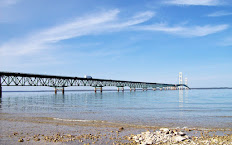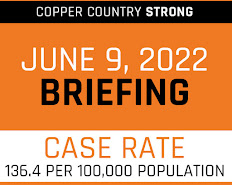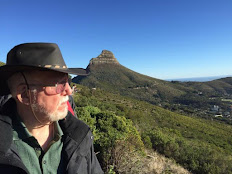By Michele Bourdieu
James Lorenson, Gogebic Community College president, welcomes Michigan Department of Environmental Quality (MDEQ) staff and thanks them for choosing to hold the June 28, 2012, public hearing on air and water quality permits for the proposed Orvana Copperwood mining project in the area of the project to allow local residents to participate in the hearing. MDEQ officials pictured here at the table are, from right, Steve Casey, MDEQ Water Resources Division district supervisor of the Upper Peninsula District Office; James Caron, Water Resources Division decision maker for the Part 301 and 303 Inland Lakes and Streams and Wetland Protection permits; Mike Bitondo, decision maker for the NPDES (National Pollutant Discharge Elimination System) discharge permit; and Andrew Drury, Air Quality Division permit engineer for the Orvana application. (Photos by Keweenaw Now)
IRONWOOD -- On June 28, 2012, a large crowd of local residents filled the gymnasium at Gogebic Community College in Ironwood, Mich., for a public hearing concerning impacts to air quality, inland lakes and streams and wetlands by the proposed Orvana Resources Copperwood mining project -- a potential underground mine for copper and silver to be located just a few miles from Lake Superior near the Porcupine Mountains Wilderness State Park.
This is the first in a series of two articles on the June 28 hearing. It
includes video clips with some of the questions asked and responses
given by the MDEQ staff during the first part of the hearing. The second article will concern the formal hearing with verbal comments that were presented by members of the audience.
Michigan Department of Environmental Quality officials from the Air Quality Division and the Water Resources Division answered questions from the public during the first half hour of the meeting -- an informational question-answer session. Informational handouts were provided and staff were available to answer individual questions from members of the audience. This part of the hearing was not officially recorded by the MDEQ. During the formal hearing that followed, verbal and written comments were recorded for consideration by decision makers, but questions were not answered in the hearing room. MDEQ staff could be requested to answer questions outside the hearing room.
During the question-answer session, several questions concerned Orvana's plans for a Tailings Disposal Facility to be located less than two miles from Lake Superior.
Questions: Why can't Orvana consider backfilling mine with tailings?
Local resident Steve Garske asks why Orvana is not being required to backfill the tailings from the mine. Joe Maki -- MDEQ geologist for the Office of Oil, Gas, and Minerals -- who approved the Part 632 mining permit for Orvana's Copperwood project, offers some answers. (Video clips by Keweenaw Now)
Philomena Kebec, attorney for the Bad River Band of Lake Superior Chippewa, asks questions about backfilling the tailings and about job creation to benefit the community.
Steve Garske asks for further clarification on the Tailings Disposal Facility (TDF). Another resident, not identified, asks about the acidity of the runoff from the tailings.
According to Orvana's Alternatives Analysis in their permit application, "The current mine plan contemplates a 13-year mine life mining a total of +30.3 M ton of ore. Essentially 25 percent of the total reserve tons will be mined during the first four years of mine development and production before any opportunity would exist to place tailings underground. ... As a result of the mine plan, there will be no isolated areas to deposit tailings until the deepest portions of the mine are completely mined with no need for access into these areas." (See p. 12, 5.1 of the Alternatives Analysis for Orvana's explanation of why they do not consider underground tailings disposal a viable alternative.)
*
Of the five alternatives considered for the Tailings Disposal Facility (TDF), Orvana preferred the fifth one listed in their Alternatives Analysis, stating the following:
"Alternative 5 was located to avoid impacts to Namebinag Creek and the East Branch Gipsy Creek. The ground at this location is relatively flat, thereby reducing the height of the required downstream dike. In addition, Alternative 5 is more than 1.5 miles at the closest point from Lake Superior. For the most part, the TDF and mill site will not be visible from the Lake of the Clouds overlook at Porcupine Mountains Wilderness State Park due to the low profile of the buildings and the tree cover. A small clearing, however, may be visible from this overlook, and the tops of the TDF dikes may be visible above the tops of trees, although somewhat less visible than Alternative 4 due to a dike height difference of approximately 24 feet. Because the dikes will be vegetated, however, there should be minimal impact to the view shed." (See pp. 20-22, 5.5, for more description of this alternative.)
*
Keweenaw Now spoke with Jim Bradley, president of the Friends of the Porkies, who was not able to attend the hearing. Friends of the Porkies is a nonprofit organization that represents the interests of all users of the Porcupine Mountains Wilderness State Park. While the group has not taken a position on the mine, they announced the June 28 hearing on their Web site.
"We're in the process of trying to keep our members informed about issues that affect the Porcupine Mountains Wilderness State Park," Bradley said.
More questions: Water quality, threatened species, wetland impacts, more ...
Local resident Rich Sloat asks about baseline water quality testing for the Orvana project. Steve Casey refers his question to Mike Bitondo (NPDES discharge permit) and Joe Maki (groundwater and monitoring).
Members of the audience ask questions about a threatened species of orchid located on the mine site, about criteria used by the MDEQ in approving Orvana's preferred alternative for the tailings, and about further comment periods for the project. Jim Caron explains that the Water Resources Division has not yet made a decision or written a permit for the Part 301 and Part 303 application but is in the process of collecting information and comments to assist them in their decision.
According to the Public Notice on stream and wetland impacts of the Orvana project, the access road will cross three different creeks, culverts will be replaced or installed at 14 locations during road construction, two stormwater detention basins totaling more than 13 acres will be constructed south of the TDF and a third detention basin of .31 acres will be constructed near the mill and will discharge into the West Branch of Namebinag Creek. A sewage lagoon outlet pipe will discharge adjacent to this same creek.
This photo shows a portion of Namebinag Creek, which will receive wastewater discharges from the Copperwood project. (Photo © and courtesy John Leddy)
Construction of the TDF will result in the loss of 13,672 linear feet of stream. Nearly 60 acres of wetlands will be impacted by dredging and fill for the project. Wetland mitigation is proposed to be on site. **
According to MDEQ geologist Joe Maki, the type of ore in this mine does not cause acid mine drainage -- a concern expressed in some of the questions at the hearing.
Michigan Tech University Professor Stanley Vitton, right, civil engineer, chats with Steve Casey, MDEQ Water Resources Division Upper Peninsula District supervisor, after the question-answer session. Vitton said he helped Orvana analyze the rock and the soil for the Copperwood project.
Stanley Vitton, Michigan Tech professor in the Department of Civil and Environmental Engineering, told
Keweenaw Now this mine should have "no problem with acid mine drainage because the ore is chalcocite."
While the hearing date, June 28, was also the final day for comments on the Part 55 Air Quality permit for the mining project, comments on the Part 301 Inland Lakes and Streams and Part 303 Wetland Protection permit are still being accepted until the
deadline of July 8. Since July 8 is a Sunday, Steve Casey said
comments postmarked or emailed on or before July 8 will be considered.
Comments on the Parts 301 and 303 permit can be emailed directly to James Caron, the decision maker, at
CARONJ@michigan.gov or sent by mail to
James Caron, Department of Environmental Quality Crystal Falls Office, 1420 US2, Crystal Falls, MI 49920 or phone 906-875-2071.
Editor's Notes: These video clips are also available, in a slightly larger size for viewing, on
our YouTube channel, Keweenaw News. Note the numbers in the titles to follow the order in this article.
*
Click here for Orvana's Alternatives Analysis on the MDEQ Web site.
**
Click here for the Public Notice, listing stream and wetland impacts.
Update: Click here for Part 2 of this article, on the formal part of the hearing -- public comments.



































































































































